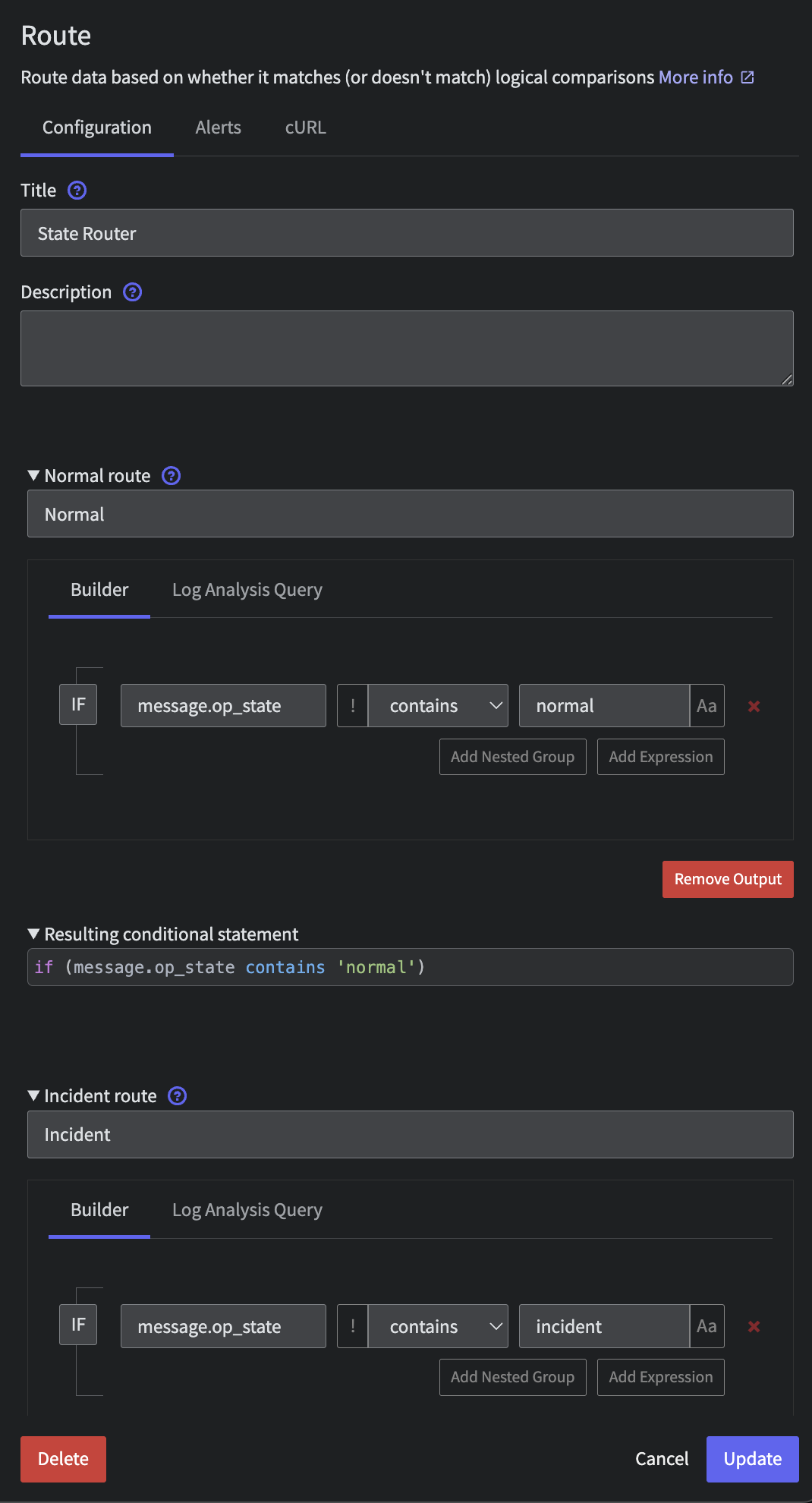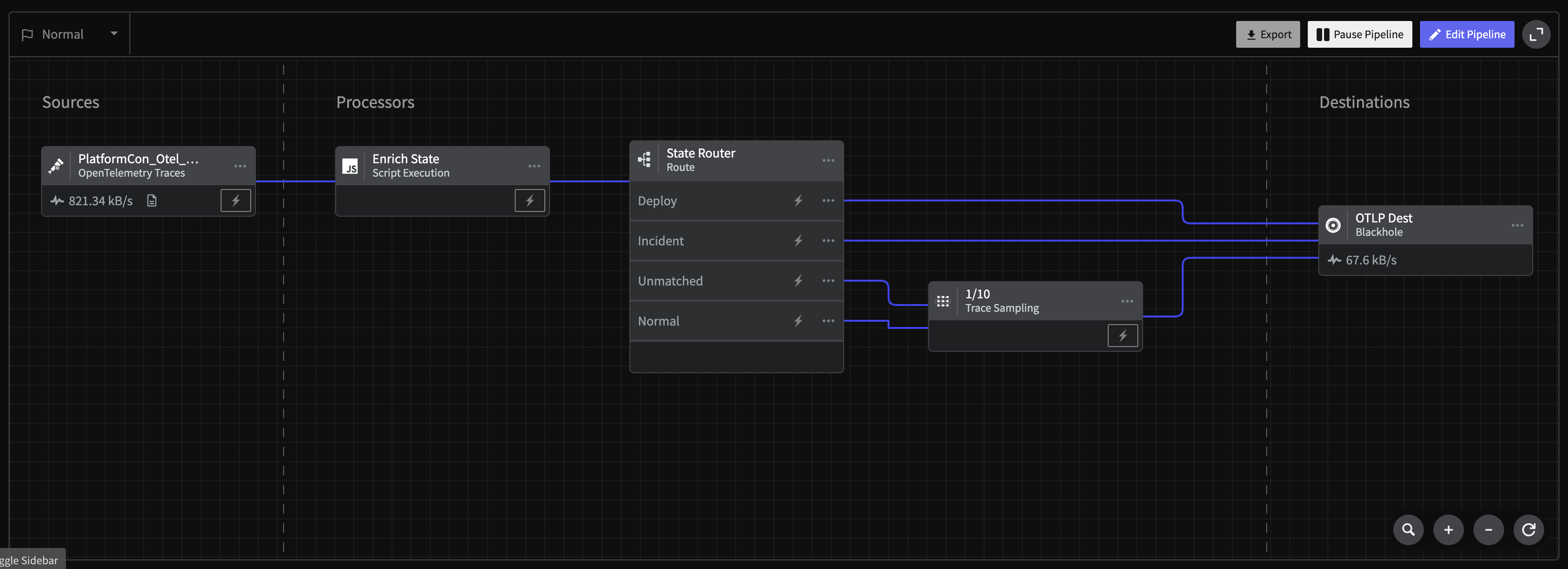Step 1: Create a new Pipeline to handle and route OpenTelemetry Traces
Create a new Mezmo Pipeline by clicking New Pipeline in the platform. Give this a name like Trace Handler. Select Create Blank Pipeline then Continue.
Step 2: Add OpenTelemetry Trace Source
Click Add Source and select your OpenTelemetry Trace source from the Shared Sources list similar to before.
Step 3: Insert State Enrichment
We will add the script to enrich each trace with the current pipelines operational state to be able to take advantage of Responsive Pipelines in the future by. Click the three dots on your Otel Trace Source and select Add Node->Add Processor->Script Execution.
Paste in the following Javascript and click Save. Note that the script does a bit more than add the operational_state state variable by tagging this data in-flight.
function processEvent(message, metadata, timestamp, annotations) { const state = getPipelineStateVariable("operational_state") message.op_state = state message.name = message.name.toString() message.tags.op_state = state metadata.resource.attributes["pipeline.path"] = "with_mezmo" if( message == null ){ return null } return message}Step 4: Route Based on State
After the initial Enrichment processor, let's route the data flow based on that operational_state. Connect a Route processor to the Enrichment Script with the following configuration:
- Title:
State Router - Route 1:
- Title:
Normal - Criteria:
message.op_statecontainsnormal - Route 2:
- Title:
Incident - Criteria:
message.op_statecontainsincident - Route 3:
- Title:
Deploy - Criteria:
message.op_statecontainsdeploy
You will end up with a pipeline that looks like the following

Trace State Router
Step 5: Sample Traces in Normal State
Add a 1/10 Trace Sample processor connected to the Normal and Unmatched routes with the following configuration:
- Rate:
10

Trace Sample Config
{{% alert %}} Note that Tail-based sampling is also available in Beta. {{% /alert %}}
Step 6: Sending Data Downstream Systems
Now, connect all outputs to a Blackhole destination. This is simply a placeholder for any Observability system you'd like. Explore our destinations in-app or in our docs to easily send telemetry data downstream into tools, data lakes and more.

Trace Blackhole Connected
Step 7: Deploy
Finally, you must deploy your pipeline in order to begin applying the trace reductions.
Step 8: Initiate State and Grab State ID
Same as with the Logs, let's initiate the State and save the State ID of this pipeline for later.
First, flip the State in the UX from Normal to Incident and back to Normal to initialize.
Then, in your terminal run run the following command with the metric pipeline's ID and grab that State ID.
curl --request GET \ --url 'https://api.mezmo.com/v3/pipeline/state-variable?pipeline_id=PIPELINE_ID' \ --header 'Authorization: Token PIPELINE_API_KEY'